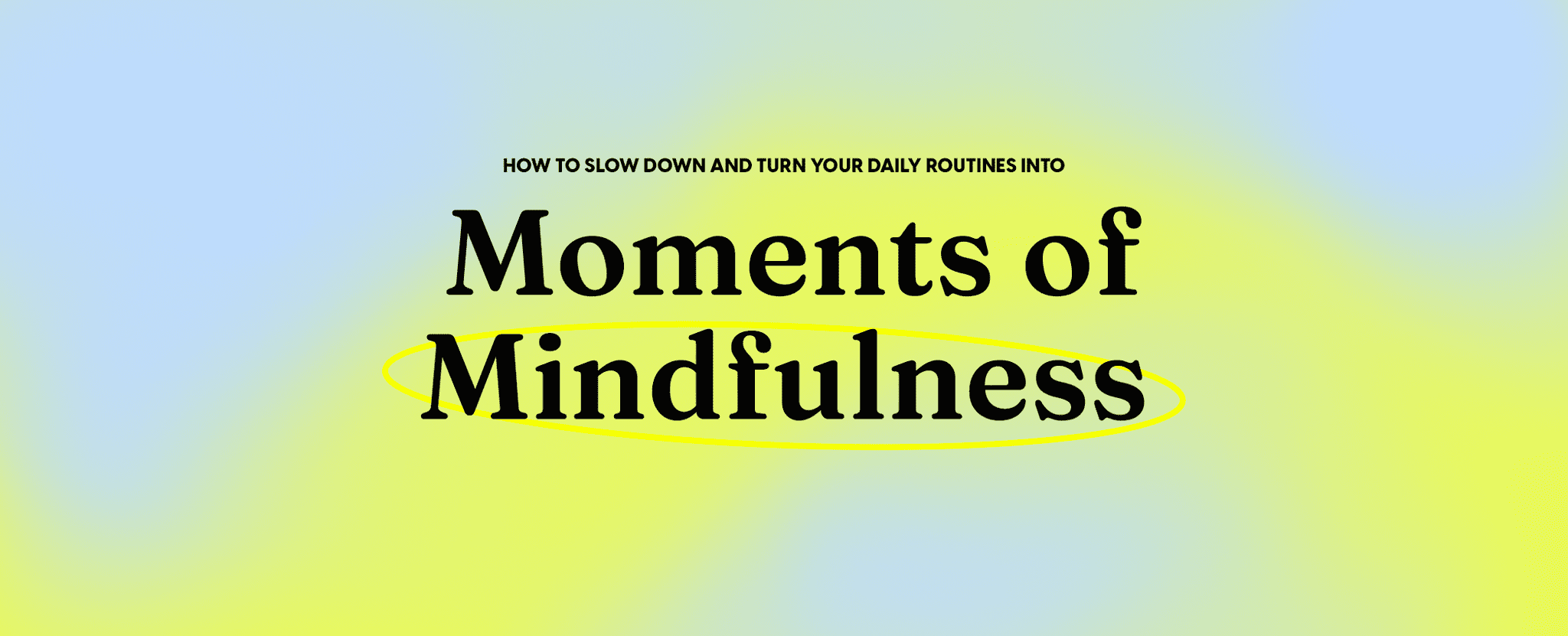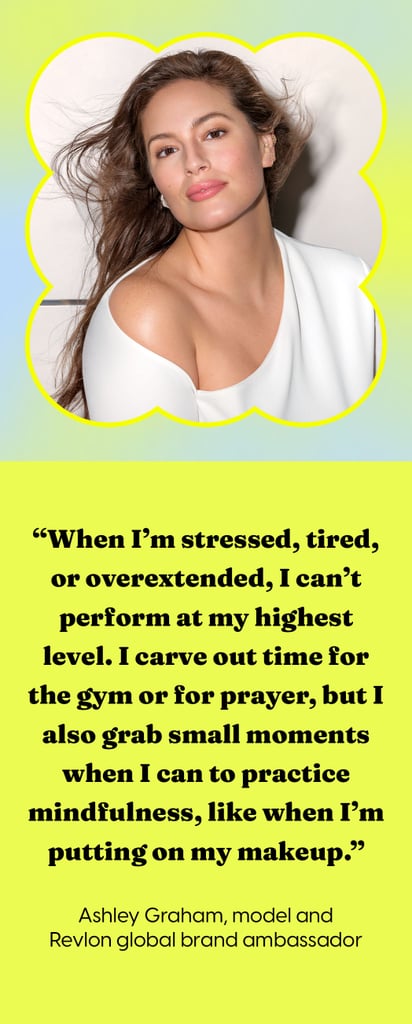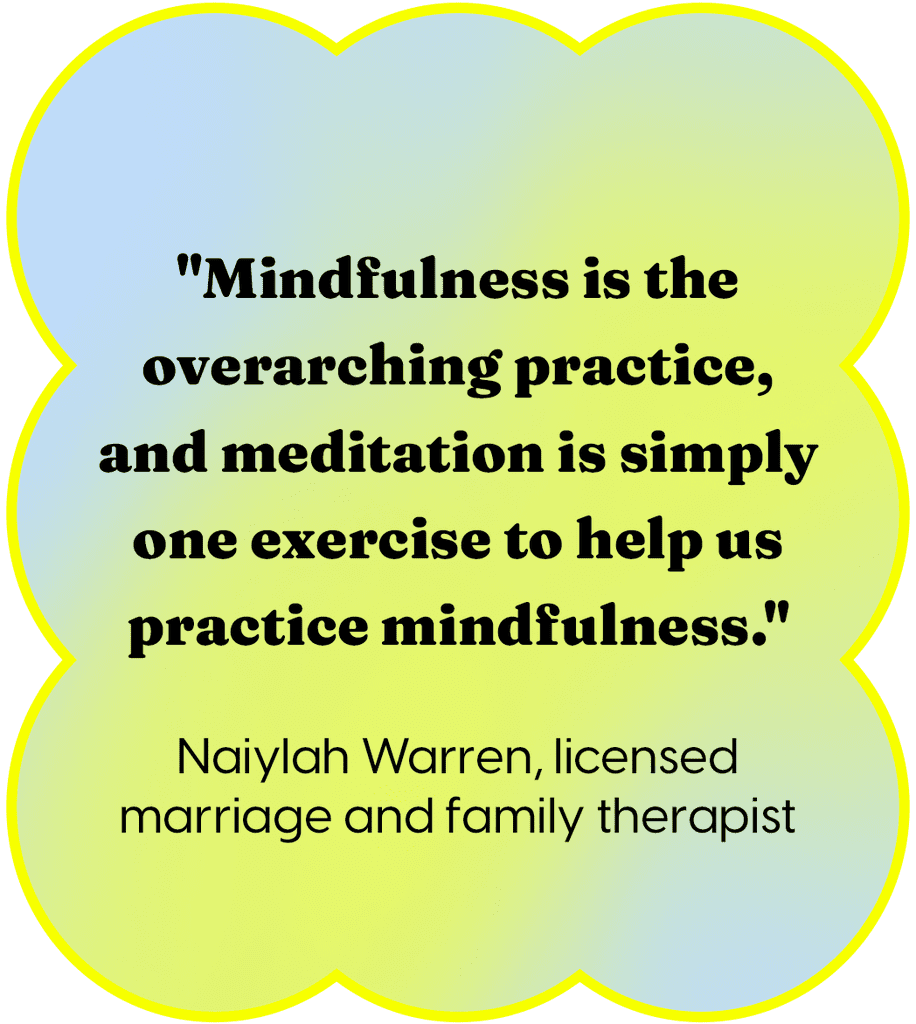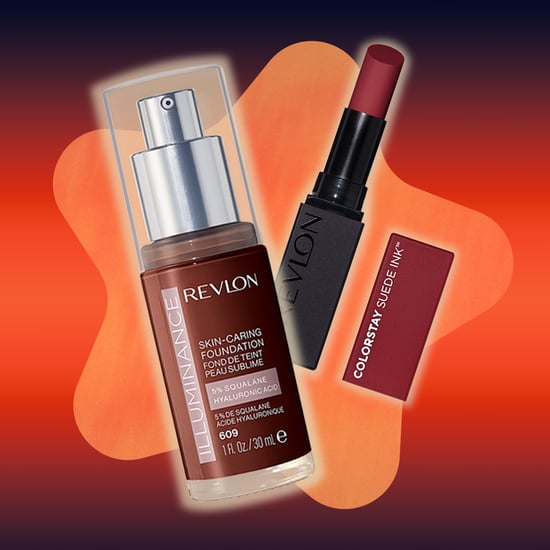
Therapist Explains How to Practice Mindfulness
How to Slow Down and Turn Your Daily Routines Into Moments of Mindfulness
Like eating vegetables at every meal or drinking a full eight glasses of water per day, practicing mindfulness is one of those healthy goals that seems more intimidating than it really is. To the uninitiated, mindfulness sounds like something you need to spend hours sitting in lotus pose to achieve — but actually, it's much easier than that.
Naiylah Warren, a licensed marriage and family therapist at Real, explains mindfulness simply: "Mindfulness is the practice of maintaining focus," she says. "Typically, when people say they don't know how to be mindful, I'd challenge them to think back to a time when they were focused, attentive, and present in an activity or experience."
If you can remember one moment where you felt focused and centered, you've already practiced mindfulness at least once. Keep reading to learn why mindfulness can be so beneficial to your mental health, as well as to get Warren's best tips for incorporating mindfulness into your daily routine.

Practicing mindfulness can lead to a myriad of benefits for your mental health, including reducing racing thoughts, helping with stress reduction, increasing satisfaction with your relationships, and even boosting working memory. But perhaps the biggest benefit mindfulness provides is calming your nervous system, Warren says. "Think about how calm or content you feel when you watch ASMR videos, for example," she explains. "When our nervous system is soothed, we feel less anxious, more present, and more connected to ourselves."
Feeling more centered doesn't mean that your mind is completely free of thoughts or distractions, though. In fact, Warren says that's one of the biggest misconceptions about mindfulness — and an unrealistic goal, especially if you're new to the practice. "When we are highly attuned or in full focus, we do experience an absence of excessive thoughts, even calm. That does not mean that it will happen for everyone," Warren explains. "The true goal is to feel more aware and present in the moment."
Mindfulness can benefit just about anyone, regardless of your lifestyle — even celebrities like model and Revlon Global Brand Ambassador Ashley Graham says she has experienced the benefits. “When I’m stressed, tired, or overextended, I can’t perform at my highest level," she explains. "I carve out time for the gym or for prayer, but I also grab small moments when I can to practice mindfulness, like when I’m putting on my makeup.”
Similarly, you don't have to meditate to experience mindfulness. "Mindfulness is the overarching practice and meditation is simply one exercise to help us practice mindfulness," Warren says. Meditation can be a bit intimidating for beginners, so Warren recommends starting with embodiment instead. "Embodiment is the practice of using the body as the main source of information," she explains.
Check in with how your body feels at that particular moment. Are you hot or cold? What sensations can you notice? Do any parts of your body feel tight or tense? "These are practices that ask us to focus in and tune into an experience which ultimately helps us to feel more connected to ourselves and in the moment," Warren says.
If you need a bit more structure to focus on, Warren recommends trying the 5-4-3-2-1 method. Find a quiet space to sit, then turn your attention to the world around you. Count five things you can see, four things you can physically feel, three things you can hear, two things you can smell, and one thing you can taste. This exercise helps ground your mind in the here and now, rather than thinking about your to-do list.

Breathing exercises serve a similar purpose. The 4-7-8 breath practice — which asks you to inhale through your nose for four counts, hold your breath for seven counts, then exhale through your mouth for eight counts — will also help you turn your focus inward and concentrate your attention on what's happening in your body.
Self-affirmation can be another way to practice mindfulness — and it's particularly helpful when you're dealing with a difficult situation, Warren says. "Self-affirmation can look like simply silently affirming your current experience coupled with an optimistic twist, like, 'I know I'm dreading this, but I'll be on the other side of this before I know it,' or even 'I am really sad about this and it's OK that I'm sad right now,'" she says. "That level of self-allowance can itself provide a level of ease." This is one of the main tenets of mindfulness: simply acknowledging your feelings instead of trying to fix them can help you find some peace.
It's one thing to acknowledge that you'd like to slow down and be more present; it's another thing to figure out how to actually integrate mindfulness into your day-to-day life. Warren recommends starting each morning with a moment of mindfulness right when you wake up. Check in with yourself by asking how are you feeling today or rating your mood on a scale of one to 10.
Warren says getting ready for the day can also be a moment of mindfulness. "Our beauty routines can be opportunities for us to intentionally spend time with ourselves," she says. "Closing your eyes [and] allowing yourself to feel your hands on your skin as you wash your face can be grounding." Since applying makeup requires focus, it's a perfect time to practice mindfulness. "I personally have never been more focused when putting on mascara or eyeliner," Warren jokes. Even the simple act of choosing eyeshadow colors from a palette or experimenting with a new contour technique can be a mindful choice.
Don't underestimate the power of looking at yourself in the mirror, either. Warren says spending some time intentionally gazing into your own eyes can be powerfully self-affirming, especially when paired with a mantra. She likes to start her mantras with "I am allowed" — for example, "I am allowed ease" or "I am allowed rest." Customize your mantra to something that resonates with you in the moment, like "I am strong" or even "I am doing my best."
Mindfulness can come in small bursts throughout your day, too. Warren suggests returning to breathing exercises on your lunch break or in between meetings. Or, if you have time, block off your calendar for half an hour and take a walk around the neighborhood. In the evenings, you can seek out calming practices that help you wind down — maybe reading underneath the covers before bed, jotting down your thoughts about the day in a journal, or even just putting your phone down and playing with your pet. Though it might not seem like a big change, finding these small mindful moments throughout the day can help you find more ease.
Start your journey with Real today. Get your first month free, then billed monthly, when you sign up for a monthly membership, or get three months free on a six-month membership. Offer valid on new memberships only. Cancel any time. Real will send a reminder when your free trial period is almost up. Offer valid until July 1, 2022, at 11:59 p.m. EST, while supplies last.
Design: Rebecca Hoskins


